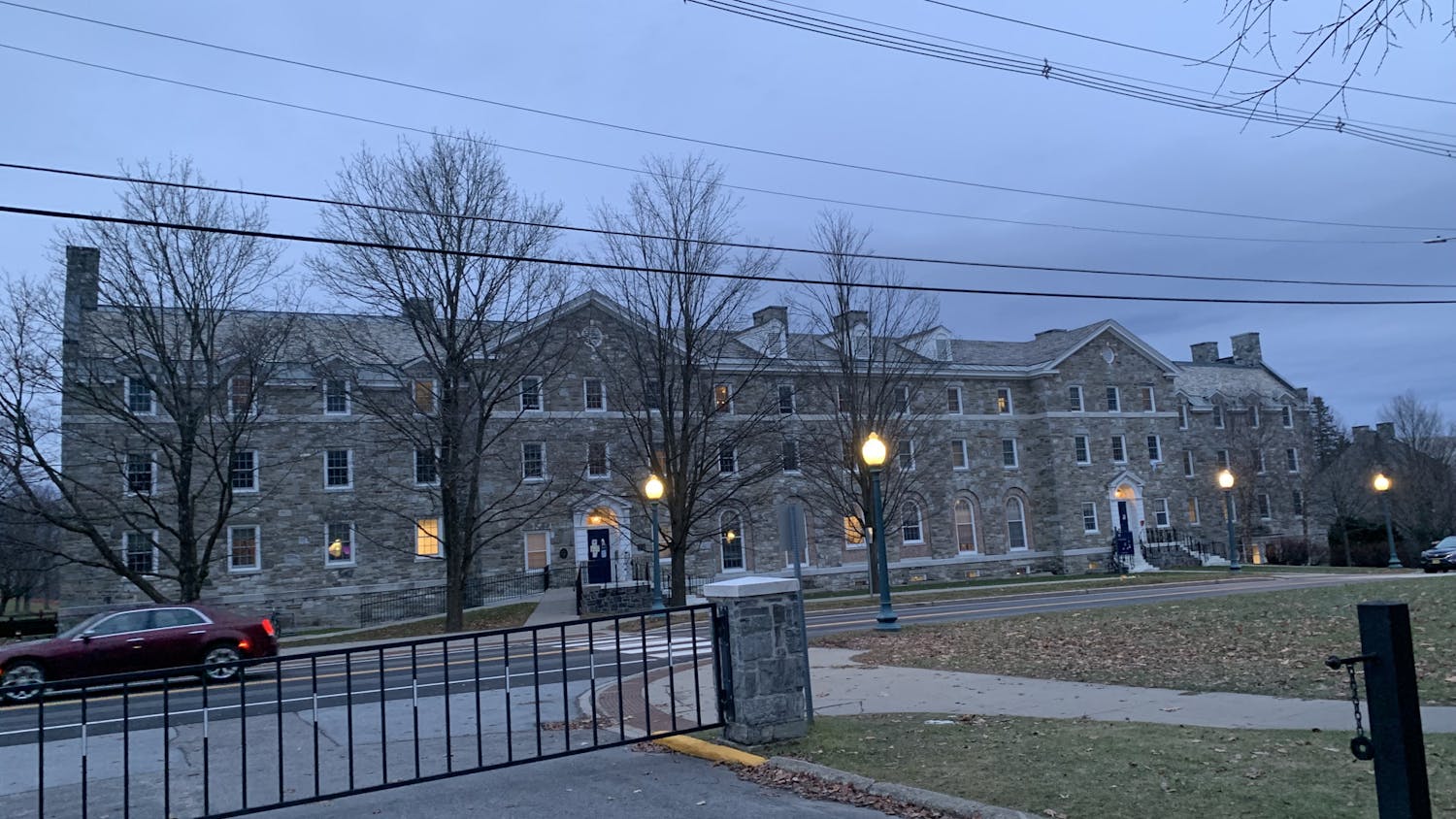Middlebury’s mission promises an “inclusive, residential environment” for the duration of a student’s time at Middlebury. The expectations for a college experience set by Middlebury fall tragically short for those living at the Inn on the Green.
Middebury’s housing ideology is simple: structure community by proximity and shared experiences with other students. These two variables are inversely related — proximity can be traded for interest houses as students spend more time at Middlebury. First-year dorms are centrally located on campus, close to college necessities like the dining halls, libraries and classrooms. The density of students in first-year dorms offers a community created through awkward happenstance encounters. As students spend more time at Middlebury they have two sets of housing options. First, students can choose central and more comfortable housing options. Second, students can move out from the center of campus to interest houses, social houses, upper-classman reserved housing or off-campus living. Students then sacrifice convenience to personally structure community for their everyday living.
However, the Inn on the Green contradicts Middlebury’s housing principles by providing no semblance of either shared interests or proximity.
Shared experiences at the Inn consist of shared indignance at an uncreative administration. These experiences take the form of long walks to campus, a feeling of isolation from campus life and tallying the number of parking tickets apportioned by PubSafe. Unlike interest house members, students at the Inn possess little to no connection to the community they live with.
In a normal college context, this experience would be difficult, but the pandemic has forced students’ college experiences to be compressed. Four years of social and academic growth are squeezed into two and a half or three years. The burden of attaining a “college experience” puts enormous stress on students to maximize every waking moment. Trying to optimize a stressful and condensed college experience requires the college to meet their pre-set expectations for an intimate, inclusive housing experience.
When maximizing the limited time at Middlebury, the Inn’s lack of proximity to campus creates logistical problems throughout the day. The Inn is about one mile from the center of campus (around Munroe Hall) or a 20-minute walk. To highlight the Inn’s distance from campus, Middlebury’s online campus map isn’t large enough to show where the Inn on the Green would be, but includes crucial collegiate landmarks like Middlebury’s Golf Pro Shop and Two Brothers Tavern. The distance isn’t far, but requires planned thought to get to dining halls, libraries and (most importantly) other students; convenient access to these amenities are necessities for the physical, academic and social well-being of Middlebury’s students. Simple on-campus conveniences like forgetting a mask, napping and resting in non-public spaces become logistically tougher at the Inn.
Most importantly, the students put into off-campus housing are those with the greatest social need for community. Those living at the Inn on the Green are juniors or junior Febs who spent either 22 weeks or five weeks on campus before Covid-19 forced them off campus. The first normal, full on-campus year for off-campus students will come when they are seniors, a difficult prospect for students already living under a compressed college timeline. I’m a transfer student from the University of Nevada, Reno. I started in spring 2020, then after five weeks Covid-19 hit, and I took a year off of school to return when we were in-person. Living at the Inn leaves me disheartened and frustrated, feeling isolated and disconnected from the school.
Middlebury admin have acted practically in two major instances to improve conditions given the unusual housing circumstances, but often these actions come late and lack support.
First, performing damage control by purchasing the Inn and retrofitting the space for dorm living provides a far more accessible community than Bread Loaf. However, Middlebury should have had a sense of upcoming housing trouble for fall 2021 after May 15 when first years’ decision day was over and existing students notified the college of their upcoming plans. Actions to mitigate housing strains were possible. There existed practical options for housing closer to campus, the financial means to purchase new spaces for students and months to plan on how to accommodate on-campus housing for an unprecedented number of students. No major action was taken until the Inn on the Green was purchased in late August. The last-minute purchase of the Inn on the Green is emblematic of a disorganized and unconcerned administration. The lack of ingenuity from the administration to adjust to an oversized student body is a pattern, evident by the shortage of J-Term courses during registration.
Second, Middlebury also has reached out to those living at the Inn to find ways to address problems. But, solutions to problems are late and lacking. An email detailing solutions to ongoing housing concerns occurred 12 weeks into the 14-week semester. Solutions include priority housing for fall 2022 and a community liaison. However, the first Inn on the Green community dinner will occur this week, 13 weeks into the semester. There is a lack of clear instructions on parking and transportation to campus. Also, parking passes are inequitable as some at the Inn have faculty parking passes (since they were initially going to live at Bread Loaf), but most don’t. No shuttle exists between the Inn on the Green and campus, which increases logistical difficulties as winter approaches. Middlebury deserves recognition for working to address issues, but it shouldn’t have taken three months for Inn on the Green residents to receive support.
Housing lottery time slots should never determine if Middlebury fulfills its promise to students that “living on campus is a core part of the Middlebury experience.” I understand the college is over-capacity and spaces are reserved for quarantine. However, the lack of imagination from a top-tier liberal arts college, with an enormous per-student endowment, to meet its own pre-set expectations is unacceptable. For example, why is the Kitchel House used to accommodate the CCI instead of students? Public posturing isn’t a solution for Middlebury’s housing shortage; we need creative solutions to ensure the health and success of the student body.



